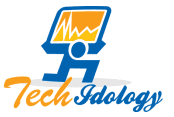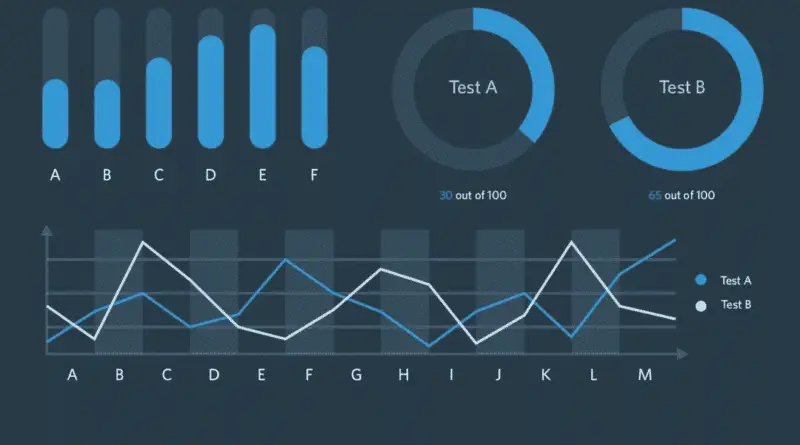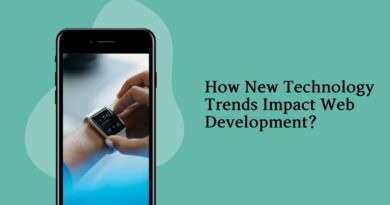12 Best Free and Paid Data Visualization Tools
There are many options to choose from when you’re looking for data visualization tools online, with the good ones, the bad, and those that might not entirely be what you’re looking for. With so much variety, it can be hard to figure out what will suit your needs and what is better left untouched.
That’s why we created this compilation of free, like Tableau, and paid, such as the Qlik Sense extension, data visualization tools that we’re sure will suit your needs.
Table of Contents
What Makes A Good Data Visualization Tool?
Good data visualization tools are generally similar. They can handle large amounts of data, look great, and is easy to pick up or learn. Both free and paid tools should be easy to pick up and understand and allow you to make great-looking graphs by inputting your data.
However, you should temper your expectations when choosing among free tools. Often they require you to understand a programming language and at least the basics of data visualization design. But if you fulfill these requirements, chances are free tools can give you all the power you need to create your stellar graphs and charts.
On the other hand, paid tools should offer bonus content, like analytic software, a better interface for designing graphs, or an interface that doesn’t require coding expertise. Essentially, paid tools need to give more than just a library of charts for you to choose from.
The Best Free Data Visualization Tools
You can easily find these on the web; many are downloadable, so you can create accurate graphs even when you’re offline. Others can compete with paid tools for power, extensions, and additional services.
1. Google Charts
Google Charts is one of the web’s most well-known data visualization tools. It helps businesses of all kinds put their data in order and create charts that offer essential business insights that help decision-making.
You can input data from various sources, from databases to clouds, and customize your graphs and dashboards with some coding expertise.
If you want a free tool with the power of a paid tool, then Google Charts has you covered tons of charts and customizations.
2. Chart.js
Chart.js is an open-source Javascript library with preset charts, designs, and animations for creating perfect graphs and charts for embedding into websites and other places on the web.
You need to understand Javascript, and there are only eight chart types available, but it’s also downloadable so that you can work with it offline. You should have a good understanding of what goes into a chart, as you’ll have to put the data in yourself manually, so it’s not the best for handling large amounts of data, but perfect for customizing charts to your heart’s content.
3. Tableau Public
Tableau is a great paid data visualization tool, but they also have a free service where you can access some of its library and data processing tools to make simple graphs.
It’s perfect for anyone who doesn’t understand coding and the science behind data visualization design, as they still make it easy to make the charts. However, it’s not full-service, so don’t expect all the power of a full-paid service, but if you like what you see, you can give their full service a try for even more tools and options when creating charts.
4. Datawrapper
Datawrapper can help create polished charts and graphs to wow audiences and display shocking facts. News sites and resources mainly use it to make quick and easy charts to show viewers.
Charts come out looking polished and pretty, a perfect data visualization tool if all you want is to create stunning charts for display. But this tool isn’t meant for businesses, and their paid service isn’t worth the extra money unless you’ll use the program daily as a news service would.
It can’t handle large amounts of data on its own, and the data must be copied and pasted into the tool to create the graphs, with no dashboards or other input options.
5. D3 (Data Driven Documents)
D3 is a Javascript library that allows you to manipulate documents with data. Fantastic for generating reports and creating documents with critical business information.
This is an impressive library, but you need to fully understand one of the compatible coding languages to use this tool. A thriving community surrounds this library and continually creates improvements and modules that can help you make even better cheats and graphs, like automatically updating data on a schedule or sending updated reports on a regular basis.
This tool can give you everything you might need in a paid tool, dashboards, updating reports, and generative data while remaining accessible offline and free.
6. JupyteR
JupyteR is an open-source notebook interface where you can use data to modify documents. It’s similar to D3 and has an equally immersive community. Plus, you can collaborate with other users on documents.
This can be essential if you want to share your documents with others regularly or if you want multiple people to have access to the same records. Otherwise, you’ll get all the power of a paid data visualization tool, with documents you can modify with data to reflect new charts and graphs, with plenty of customization to boot.
It’s compatible with over forty coding languages, one of the market’s most accessible free data visualization tools.
Read more: Power BI Vs Tableau: Difference Between Two BI Tools
The Best Paid Data Visualization Tools
Paid data visualization needs to be accessible, easy to learn, and offer multiple bonuses like data analytics and predictions to be worth your time. Moreover, some are meant for different purposes rather than all-around data visualization, like undertaking massive projects or specializing in business predictions.
1. Qlik Sense
Qlik Sense, also called Qlik View, is one of the most exciting up-and-coming paid data visualization tools on the market. It has the latest AI and machine learning technology, meaning its predictive software is exceptionally accurate, primarily as you use it over time.
There are plenty of charts and graphs to choose from, plus a simple interface anyone can learn and use. If you don’t find what you’re looking for, you can just add a Qlik Sense extension for it.
If you want a powerful data visualization tool and some of the best predictive and business analytic tools on the market, then Qlik Sense has you covered.
2. Tableau
You just read about Tableau Public and its fantastic free data visualization tool. But the paid version of Tableau is even better. You get an expansive library of graphs, a simple and easy interface, dashboard and chart customization, and much more.
Tableau even has mapping capability! With so many services, you’ll be spoiled for choice. There are hundreds of import options for data and a desktop app so you can work offline and online.
It’s a tremendous all-around data visualization tool that can be perfect for businesses and people who want to create great charts and graphs to show off.
3. Zoho Reports
Zoho Reports, also called Zoho Analytics, is ideal for businesses. It can import from hundreds of different sources and blend them all to create stunning charts that will give you hidden business insights where you can take action to improve your business.
Dashboards, schedules, auto-updates, Zoho essentially gives you all the power to run a complete and total overview of your business at all times, from organizing the data when it comes in to automatically updating your dashboard and sending you reports.
Plus, their analytic and insight software can help you organize your data correctly and effortlessly once you’ve set the schedules and connections to your data generators. However, the interface has a steep learning curve. You need to invest some time into learning.
4. Fusion Charts
Fusion Charts is perhaps the most popular data visualization tool for Fortune 500 businesses and large companies. Why? Because of the free and paid data visualization tool on the internet, Fusion Charts offers the most flexibility.
It integrates into the most powerful frameworks and platforms, offers over 150 chart types, and is compatible with multiple programming languages. Yet it has preset code that even limited coders can use to design stellar dashboards and charts.
The power of Fusion Charts cannot be understated, but neither can the price point, as it’s also one of the market’s most expensive data visualization tools.
5. Power BI
Power BI is Microsoft’s data visualization tool, and it offers a free version in addition to a paid version. However, only its paid version makes this list, as it offers more features and flexibility. In contrast, the free version is primarily simplistic; the only selling point is that you can collaborate with others.
But with the paid version of Power BI, you can create more detailed graphs and cheats, collaborate more easily with others who have access to your account, get powerful analytic software, and integrate with other Microsoft products for a seamless visualization experience.
6. Sisense
Sisense isn’t your standard business data visualization tool. While you can build dashboards and great charts, the primary use of Sisense is to input a positively stunning amount of data into the system, and it will use intuitive analytic software to compile a great chart.
It’s fantastic for large projects requiring you to analyze a jaw-dropping amount of data, like with Big Data, or large businesses with many moving parts.
Wrap Up
Hopefully, with this list you will find a free or paid tool that is the right one for your situation. Some are more suited for personal projects others are ideal for dealing with large amounts of data. If you’re looking specifically for predictive software with great waterfall graphics, try Qlik Sense and their waterfall Qlik Sense extension.




